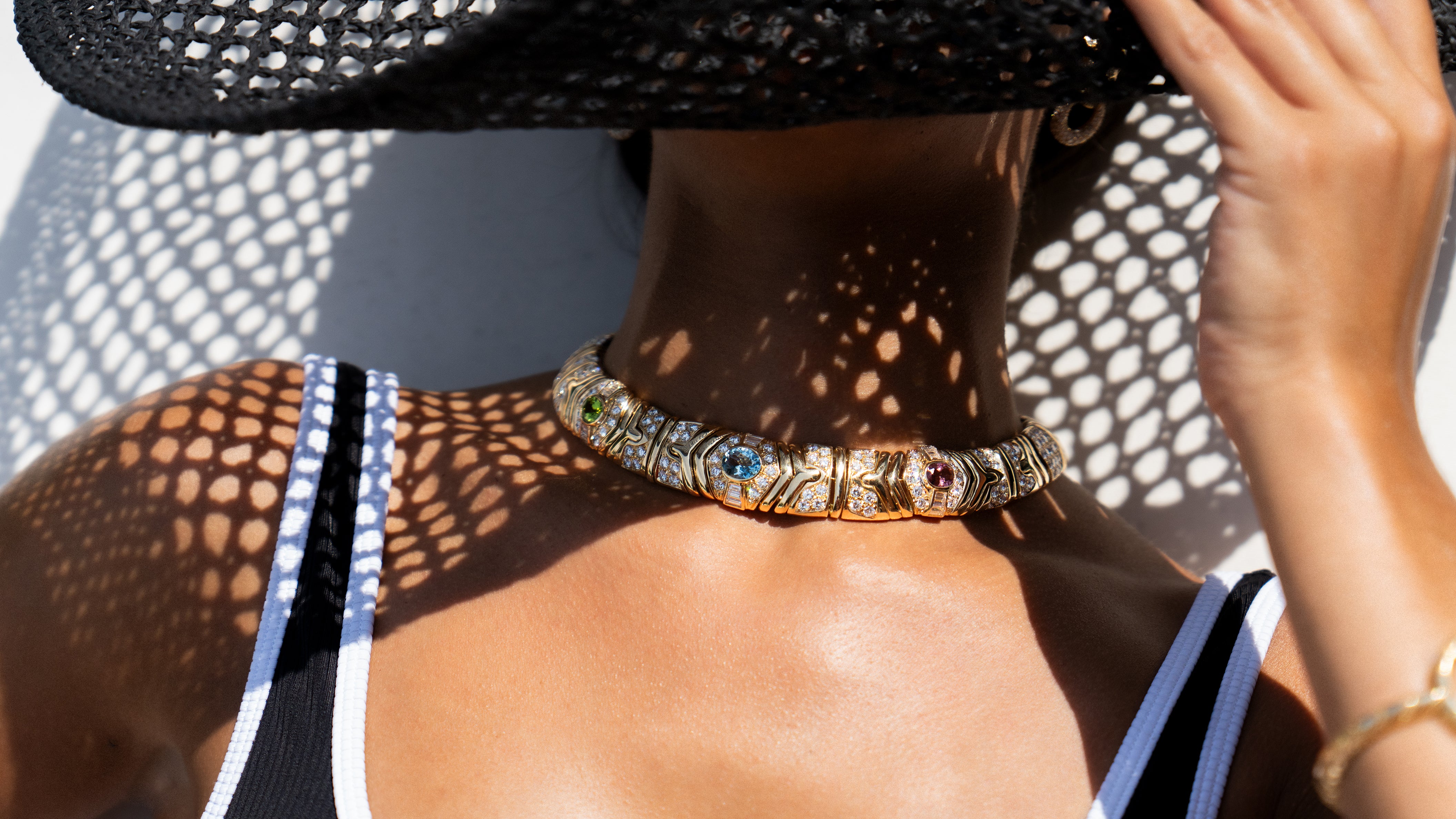Victorian Romantic Period: 1837-1860
The early years of Victoria’s reign marked an era that was a time of significant changes in jewelry development and symbolism.
Victorian Romantic Period: 1837-1860
Like the Queen herself, fashions of this early Romantic Period possessed vibrant, youthful themes. These were the years of Victoria’s romance with Albert and subsequent marriage.
The chivalry and pageantry of the Middle Ages were revived during this time, with re-enacted tournaments, tours of historical Gothic and Norman buildings, and jewelry designs that featured Renaissance and Middle Ages motifs.
Realistic and intricate gold brooches featured clusters of seed pearls depicting bunches of grapes. Seed pearls were strung onto brooches and necklaces that were backed by mother-of-pearl and decorated with bows, leaves, and tendrils fashioned in gold. Often pieces would be chased with miniature flowers and scroll motifs.
Techniques
Most jewelry during this time period was hand crafted in gold, tri-colored gold, and silver. This was troublesome for the British since jewelry was only allowed to be hallmarked at high karat gold such as 18 and 22 karat, so around 1854 new laws were set into place that allowed for lower karats of gold to be hallmarked, including the English in the competitive international market.

Victorian Romantic Jewelry Trends
- Necklaces were predominantly choker style due to dress at the time.
- Chains were interspersed with gems with thematic central stations.
- Brooches were impressive in size and often featured a hinged bale allowing versatility as a pendant.
- Bracelets were arguably the most popular form of jewelry in the 1840s and 1850s.
- Lockets of every type were all the rage. Miniature portraits and locks of hair were typical contents, placed lovingly into these sentimental pendants.
- Until 1840, long earrings were reserved for evening outings, but during the day earrings lost practicality due to ear covering hair and large bonnet style. By the 1850s, styles shifted once again, and petite earrings and hoops became a jewelry must-have.
- Ferronières, headbands that encircled the woman’s forehead featuring a small jewel suspending in its center. The piece paid homage to a style created in the late 15th Century in Italy.
- Acrostic Jewelry featured gemstones spelling out a sentimental word. For example, a Diamond, Emerald, Amethyst, and Ruby would come together to represent the word “DEAR.”
- Mourning jewels and other sentimental mementos of loved ones were popular; styles incorporated hair and were inscribed with messages of love and inspiration.
- The French conquest of Algeria (1830-1847) had an impact on Victorian fashion. Tassels, knots, twisted cords, and festoons were depicted in gold jewelry. Lotus flower motifs were also adopted and would remain popular for decades afterward.


Materials
The arrival of the 1850s and 1860s marked a dramatic uptick in the number of tourists who visited Rome, Naples, and Florence, as well as the ruins of Pompeii. Souvenirs from these visits found their way home, cameos carved from an array of different materials such as coral and shell from Naples and volcanic lava from the shadow of Mount Vesuvius.
A favorite of this period was coral fashioned as a variety of shapes, from simplistic polished teardrops to masterful sea serpents and grotesques. Coral naturally forms as branched calcium carbonate and was often incorporated stylistically into brooches and tiaras. The custom of wearing coral in its natural form began in Italy, where the practice was said to protect the wearer from the evil eye and keep children safe from harm. Also popular was the typical strand necklace comprised of round coral beads in shades ranging from vibrant red hues to soft pinks.
Other popular gemstones were turquoise, rich red garnet, amber, amethyst, chalcedony, chrysoberyl, diamond, demantoid garnet, malachite, quartz, and topaz.
Motifs
The serpent had been a popular motif since ancient times, serving as a symbol of wisdom and eternity and was the engagement ring given to Victoria by Albert, surging its popularity once more.
Other popular motifs included hearts, eyes, hands, anchors, crosses, arrows, clovers, love knots, garters, and buckles.
The End of an Era
The Romantic Period came to an end with the death of Queen Victoria’s beloved Prince Albert in 1861. The Victorian Grand Period followed, stretching from 1861 to 1880, covering the 20 years of Queen Victoria’s official mourning period.
